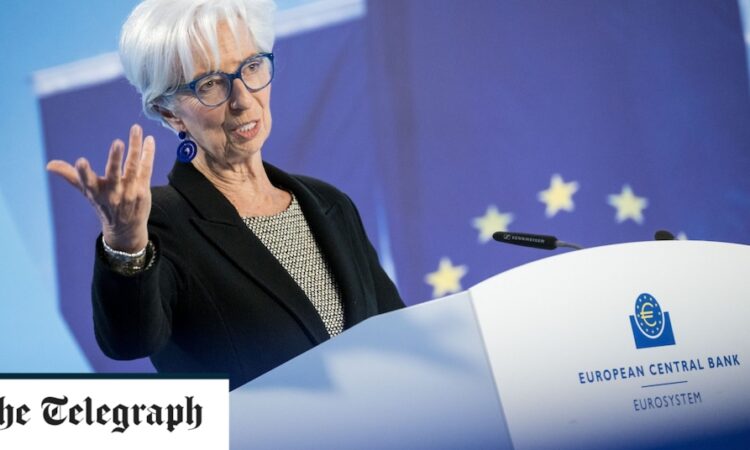
To which one can only retort: thank heavens for that.
If anything does go wrong – and there is a high probability that it will, given the galloping contraction in the money supply – the eurozone still lacks the machinery necessary to contain a banking crisis.
The EU authorities do not have the legal power to conduct the sort of rescue measures just concocted by the US Treasury, the Federal Reserve, and the Federal Deposit Insurance Corporation, acting in concert.
This is not to say that Washington has made a good fist of it.
The US has inadvertently invited a broader downward spiral by insisting banks must be seized, and shareholders and bondholders must be wiped out, before there can be a subsidised takeover.
It is now even harder for any lender in distress to raise capital or to find a buyer.
Who exactly is responsible for a bank rescue in the eurozone, and on what legal terms?
The Bank Recovery and Resolution Directive (BRRD) does not allow national governments to bail out uninsured depositors in a crisis.
There is no equivalent to the US “systemic risk exemption” clause, which limited contagion (briefly) after the collapse of Silicon Valley Bank.
The BRRD is a dog’s dinner.
It aims to ensure that taxpayers will never again be on the hook when banks fail. What it instead does is to guarantee havoc.
The terms are so harsh, and so contradictory, that many European banks could not meet the “bail in” threshold without having to confiscate the deposits of ordinary savers (as happened in Cyprus).
The deeper point is that the eurozone never completed its long-promised banking union. There is still no shared deposit insurance for banks. The infamous doom loop from 2011-2012 lives on.
Each country is still responsible for rescuing its own banks even though it cannot print its own money or set its own interest rates, and no longer has its own lender-of-last-resort; and even though it has no means of blocking dangerous inflows of speculative capital (as happened to Spain).
A banking crisis still threatens to pull any of the eurozone high-debt states into the abyss with it.
The even deeper point is that Germany, the Netherlands, and the creditor states of the North still refuse to accept fiscal union and permanent issuance of joint debt, for the legitimate reason that this would eviscerate the tax-and-spend sovereignty of their own parliaments.
Nor do they want to share their credit card with the unreformed high-debt economies of the South. This leaves the bloc exposed to a risk ‘spread’ drama every time trouble hits.
The European Central Bank is in an invidious position, partly of its own making. Core inflation is stuck at 5.6pc after rising for several months, but the eurozone economy has stalled and is in near recessionary conditions. Bank lending is contracting.
The ECB’s latest bank lending survey says lenders have been tightening net credit standards at the fastest pace since the eurozone debt crisis, which will have potent consequences in an economy with primitive capital markets that still relies on bank lending for 93pc of total credit.
The risk of a full-blown credit crunch rising by the day.
The governing council deems inflation to be the greater immediate threat.
It not only raised rates by quarter point on Thursday, and signalled two more to come, but also said it would double the pace of quantitative tightening, which accelerates the decline in broad M3 money.
It is yanking away a crucial prop for weaker banks in Italy and Spain.
No steps have been taken to soften the blow as €1.2 billion of cheap emergency loans (TLTROs) come due in tranches. Some €470bn must be repaid to the ECB next month.
“We think this was unwise given global banking stress,” said Krishna Guha from Evercore ISI.
The Bank of Italy’s financial stability report warned last week that “just under half of Italian banks have insufficient reserves to repay the TLTROs over the coming quarters”.
They can find other sources of funding but only at much higher borrowing costs, eating into their operating margins.
We will find over the coming months whether or not this monetary tightening, at this juncture, is a major blunder akin to the ECB’s policy overkill in 2008, just as the global financial crisis was closing in; and again in 2011, just as the Italian and Spanish bond markets were imploding.
On both occasions it was chasing residual inflation that was rolling over anyway.
On paper, European banks are in sound health. Non-performing loans have fallen to a trivial 2pc.
Aggregate Tier 1 capital (CET1) is a safe 15.27pc and the liquidity coverage ratio is ample at 161pc.
But Credit Suisse also had strong buffers. That did not stop death by deposit flight.






